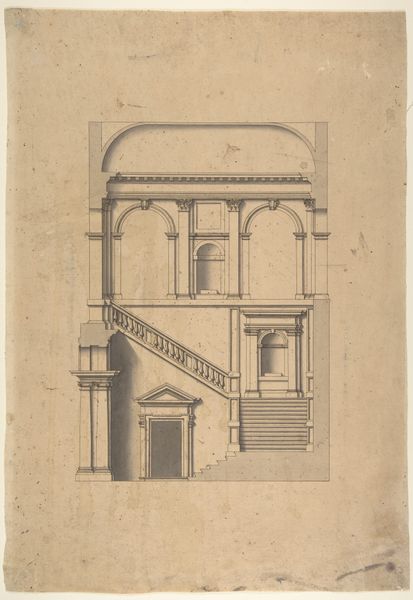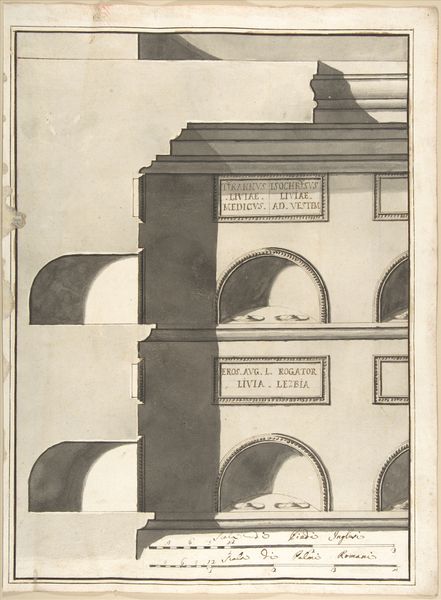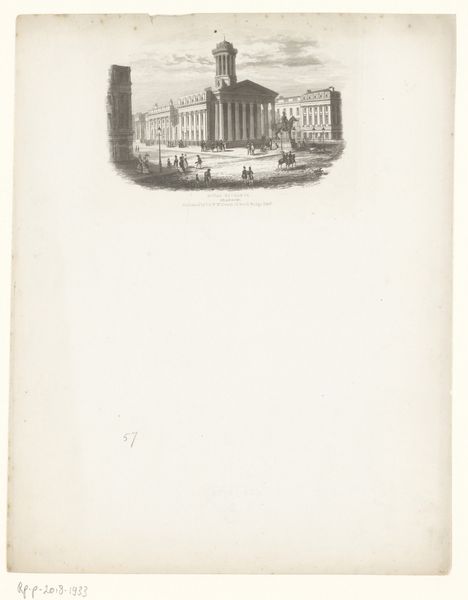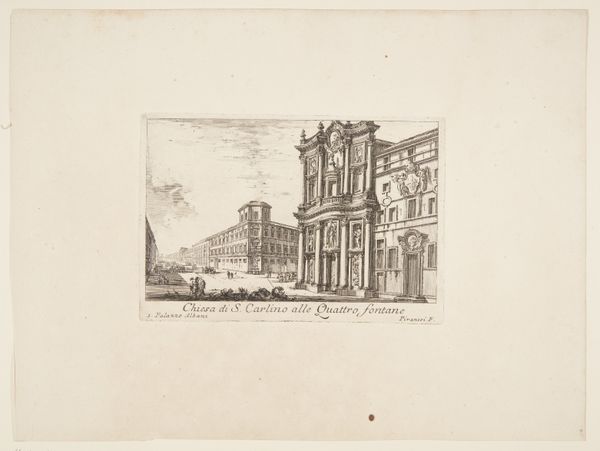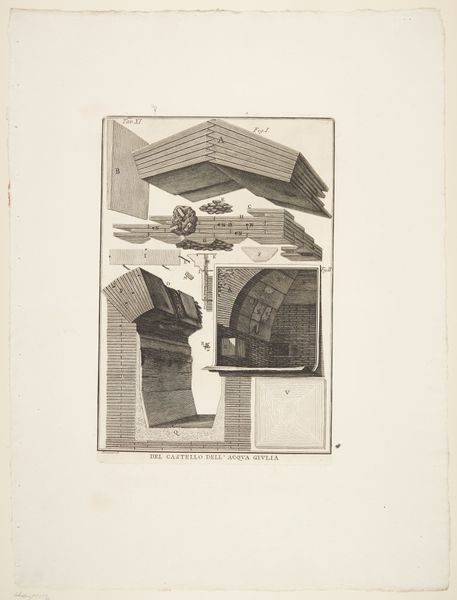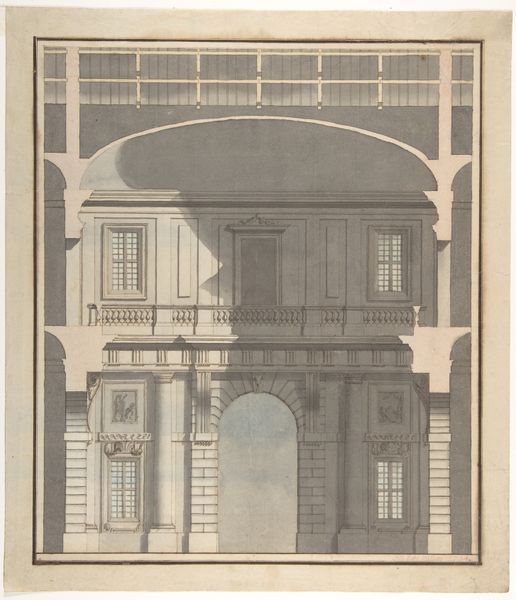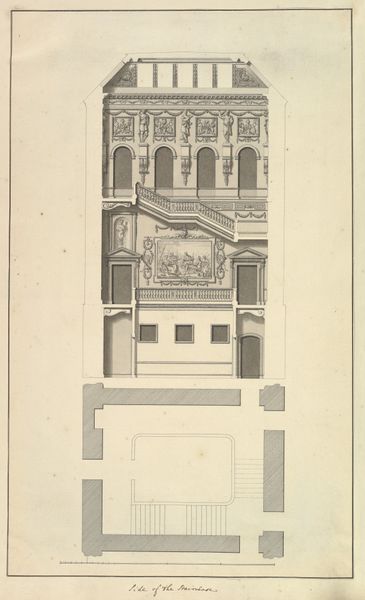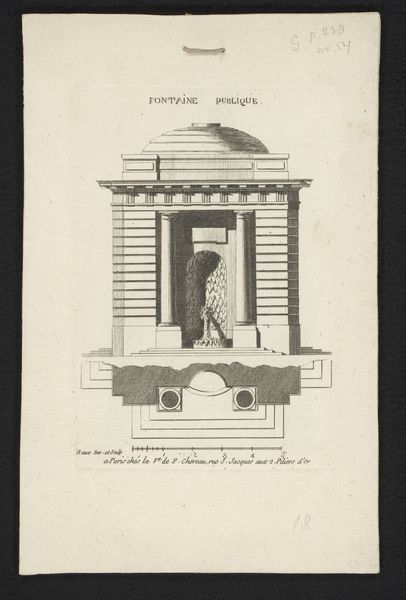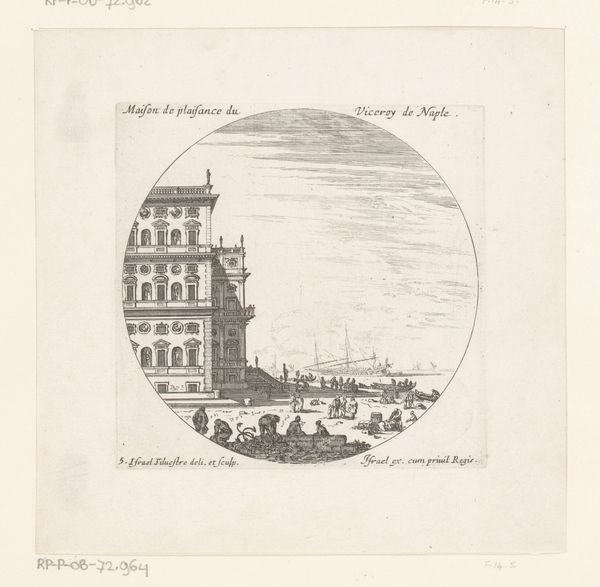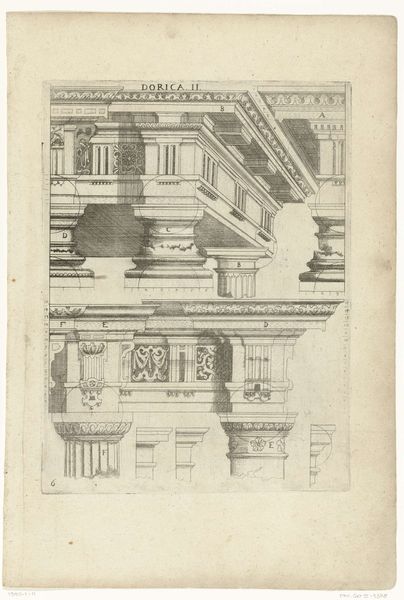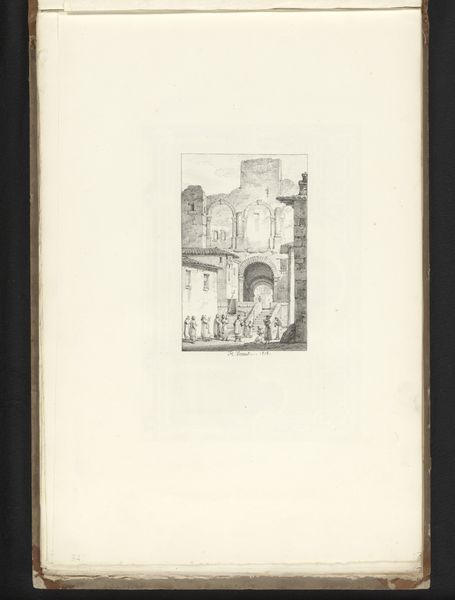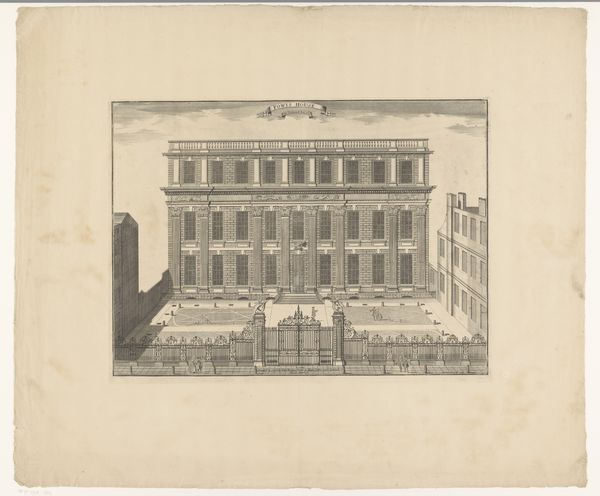
Gezicht op een ruïne met figuren op een trap en bij een fontein 1772 - 1779
0:00
0:00
print, etching, architecture
#
neoclacissism
# print
#
etching
#
landscape
#
geometric
#
history-painting
#
architecture
Dimensions: height 288 mm, width 204 mm
Copyright: Rijks Museum: Open Domain
Editor: This etching, "View of a Ruin with Figures on a Stairway and Near a Fountain," was created by Juste Nathan Boucher between 1772 and 1779. It’s incredibly detailed for a print. I'm struck by the artist's precise rendering of the architectural forms. How would you interpret the geometric composition of this ruin? Curator: The image presents a fascinating study in contrasts. Observe how the artist deploys linear perspective, emphasizing the rational geometry of Neoclassical architecture juxtaposed with the organic decay implied by the ‘ruin.’ The medium itself, etching, with its reliance on line and tone, is meticulously employed to create spatial depth, do you see? Editor: I see how the lines create the forms, and also how it creates the sense of shadow! Is there a specific element that is, structurally, more important in the work? Curator: The Doric columns and entablature – note their rhythmic repetition and strict adherence to classical proportions, establishing a sense of order. Yet this order is deliberately fractured. The fragmented nature draws the eye upward along implied vectors, questioning the stability of idealized form. Note the figures; they serve not merely as adornment but also provide scale and highlight the monumentality inherent to the scene. Editor: So it's the relationship between the geometric structure and the ruin that matters here? The contrast is definitely engaging. I hadn't considered how vital the human figures were to conveying the immense size of everything else. Curator: Precisely. It invites reflection on temporality itself—on themes of ephemerality and permanence expressed through architectural form and decline, an important concept within philosophical thinking of the time. Editor: I will remember the interplay between order and decay in shaping the essence of this artwork! Curator: I concur. Appreciating the image's formal language enriches understanding beyond just surface-level historical details.
Comments
No comments
Be the first to comment and join the conversation on the ultimate creative platform.
